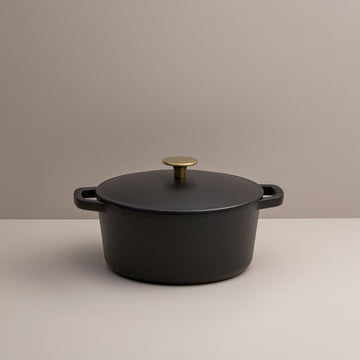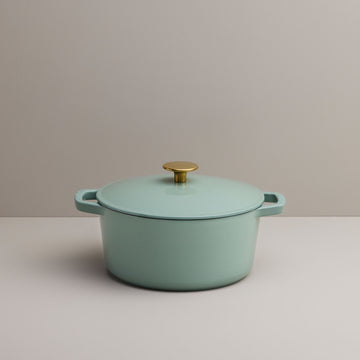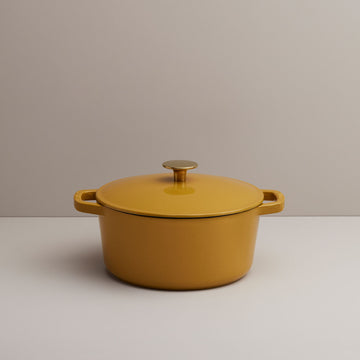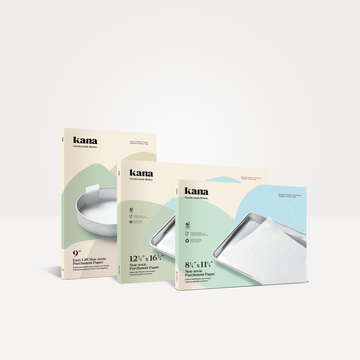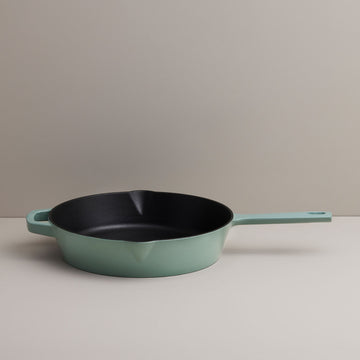What's the difference between a Dutch Oven and a French Oven?

Ever been confused by Dutch ovens and French ovens? Let us lay out the differences between these two versatile pieces of cast iron cookware.
We’re living in a golden age for home chefs. With the advent of Pinterest, recipe blogs and online shopping it has never been easier to call up a recipe or shop for your dream cookware. What isn’t easy, however, is suddenly discovering that a lot of the world doesn’t necessarily use the same words for the same ingredients, equipment or even dishes as you do. One such example is the Dutch oven and the French oven. These heavy, durable and versatile pots sure look similar but when it comes down to it - what is the difference between a Dutch oven and French oven?

What is a Dutch oven?
Despite its name, the Dutch oven is an English invention, patented by Abraham Darby in 1707. He named the invention a “Dutch oven” after observing how craftsmen in The Netherlands were able to make high quality cookware by using sand to mold brass. Looking to make a more affordable product, Darby’s Dutch oven was molded in a cheaper material, iron, and is the ancestor of the cast iron Dutch ovens we are used to today.
These days a Dutch oven is understood to be a cooking vessel made from cast iron, with a flat base, straight walls and a heavy, tight-fitting lid. These characteristics make Dutch ovens excellent at trapping condensation during cooking, which shortens cooking time, keeps food moist and intensifies flavors. Dutch ovens have become a favorite tool for bakers looking to make homemade bread.
Dutch ovens that are made of raw cast iron need to be “seasoned” prior to being used in order to improve the stick-resistance of its cooking surface, and protect it from rust. A well-maintained Dutch oven is one of the most useful cooking vessels you can own, and can cook food on the stove, in the oven or even over a campfire.
These days a Dutch oven is understood to be a cooking vessel made from cast iron, with a flat base, straight walls and a heavy, tight-fitting lid. These characteristics make Dutch ovens excellent at trapping condensation during cooking, which shortens cooking time, keeps food moist and intensifies flavors. Dutch ovens have become a favorite tool for bakers looking to make homemade bread.
Dutch ovens that are made of raw cast iron need to be “seasoned” prior to being used in order to improve the stick-resistance of its cooking surface, and protect it from rust. A well-maintained Dutch oven is one of the most useful cooking vessels you can own, and can cook food on the stove, in the oven or even over a campfire.

What is a French oven?
If you think that the description of the Dutch oven sounds a lot like a French oven, you’d be right. In essence, a French oven is a type of cast iron Dutch oven that has a porcelain enamel coating. Created in the early 1900s, the enamelled surface of the French oven greatly improved the stick-resistant performance of the already durable and versatile Dutch oven. Locally known as a cocotte, the French oven became the perfect tool for popular recipes of the time like boeuf bourguignon, which involved browning the meat on the stove before transferring the dish to the oven to finish cooking.
The enamelled coating also eliminates the need for seasoning, which made these newer Dutch ovens easier to maintain, and also allowed for the endlessly useful Dutch oven to be produced in a wide range of delightful colors. While they’re usually circular, these days casting technology can give us Dutch ovens in all sorts of shapes including oval, square, heart-shaped, or even shaped like pumpkins.
The enamelled coating also eliminates the need for seasoning, which made these newer Dutch ovens easier to maintain, and also allowed for the endlessly useful Dutch oven to be produced in a wide range of delightful colors. While they’re usually circular, these days casting technology can give us Dutch ovens in all sorts of shapes including oval, square, heart-shaped, or even shaped like pumpkins.

So which is better?
For the most part, raw cast iron Dutch ovens and enamelled cast iron Dutch ovens, or French ovens, can be used interchangeably. But there are some differences, and it’s important when shopping for your cookware to consider what you will and won’t be using the Dutch oven for.
Raw cast iron Dutch ovens are very durable but involve some complicated care rituals including seasoning, and not using detergent. Many people opt for an enamelled Dutch oven due to their stick-resistance, easy maintenance, convenience and style.
Thankfully, at Kana, we have both raw and enamelled cast-iron options, so no matter your preference, we have your cooking needs covered.
Raw cast iron Dutch ovens are very durable but involve some complicated care rituals including seasoning, and not using detergent. Many people opt for an enamelled Dutch oven due to their stick-resistance, easy maintenance, convenience and style.
Thankfully, at Kana, we have both raw and enamelled cast-iron options, so no matter your preference, we have your cooking needs covered.
Thankfully, at Kana, we have both raw and enamelled cast-iron options, so no matter your preference, we have your cooking needs covered.
Keep exploring
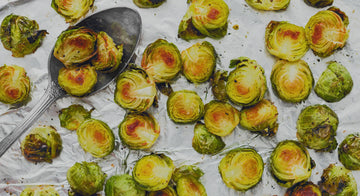
Is aluminum foil safe to cook with?
Aluminum foil may have been a kitchen pantry staple for the last 100 years but, as new research around food safety and environmental impact shows, it’s time we wrap up our love affair with this malleable metal.
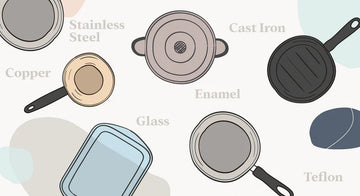
How to shop for non-toxic cookware and bakeware
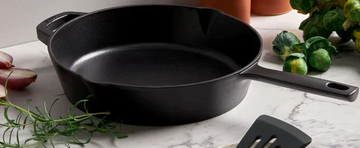
The Advantages of Enameled Cast Iron and Raw Cast Iron Cookware
Cast iron cookware comes in all shapes and sizes and are classified as kitchen staples all around the world. Here’s a look at why both raw and enameled cast iron Dutch ovens are perfect for any kitchen.
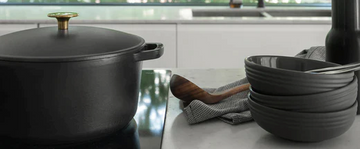
Why is it called a Dutch Oven?
While Dutch ovens have become a charming and familiar part of any modern kitchen, their name does lead to some confusion. What do the Dutch have to do with it? Isn’t it an English invention? And what about the French? It’s time to straighten things out.
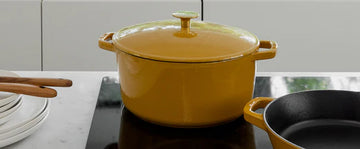
What is a Dutch Oven and why are they so popular?
The Dutch oven’s popularity has exploded in the last couple of years. If you’ve been wondering what this classic cooking pot brings to the table, read on.
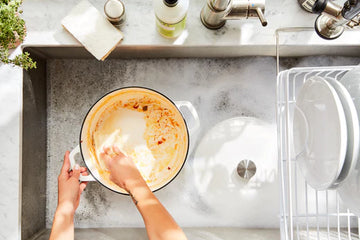
How to clean & season a cast iron Dutch Oven
Like with any cookware, there are times when your Dutch oven might get a little sticky, scorched or stained, but taken care of properly, your cast-iron cookware should last you well into the future.

Is aluminum foil safe to cook with?
Aluminum foil may have been a kitchen pantry staple for the last 100 years but, as new research around food safety and environmental impact shows, it’s time we wrap up our love affair with this malleable metal.

How to shop for non-toxic cookware and bakeware

The Advantages of Enameled Cast Iron and Raw Cast Iron Cookware
Cast iron cookware comes in all shapes and sizes and are classified as kitchen staples all around the world. Here’s a look at why both raw and enameled cast iron Dutch ovens are perfect for any kitchen.

Why is it called a Dutch Oven?
While Dutch ovens have become a charming and familiar part of any modern kitchen, their name does lead to some confusion. What do the Dutch have to do with it? Isn’t it an English invention? And what about the French? It’s time to straighten things out.

Crispy pizza at home: tips for the perfect crust
Have you ever made pizza at home, but been disappointed by a soggy or undercooked crust? There are tools and tricks to make homemade pizza just as good as delivery, whether you like thin or thick crust.

What is a Dutch Oven and why are they so popular?
The Dutch oven’s popularity has exploded in the last couple of years. If you’ve been wondering what this classic cooking pot brings to the table, read on.
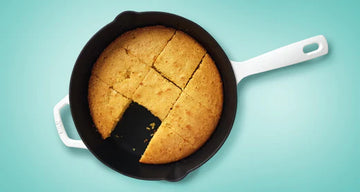
5 deliciously easy flour-free bread recipes
Simple bread recipes to make at home when you're running short on wheat flour.

The Advantages of Enameled Cast Iron and Raw Cast Iron Cookware
Cast iron cookware comes in all shapes and sizes and are classified as kitchen staples all around the world. Here’s a look at why both raw and enameled cast iron Dutch ovens are perfect for any kitchen.
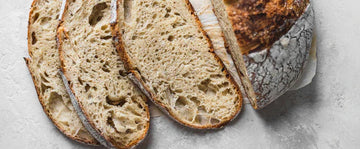
The proof is in the... proofing
The proofing process is an essential part of baking yeast-leavened goodies. Without it, you'll end up with a sad, flat pancake instead of that beautiful bread loaf you were hoping for. Yes, it takes some time to perfect the process, but once you've got it, you too can experience freshly-baked bread and pastries at home.
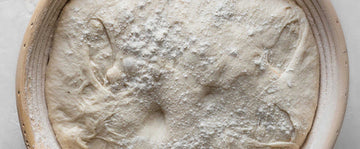
Proper proofing: how to work with yeast doughs
The most important technique to master when learning how to make bread and other yeasted treats is proofing, where all the rising happens. Today we’re going to learn how to proof bread dough for the best homemade loaves!

Why is it called a Dutch Oven?
While Dutch ovens have become a charming and familiar part of any modern kitchen, their name does lead to some confusion. What do the Dutch have to do with it? Isn’t it an English invention? And what about the French? It’s time to straighten things out.

What is a Dutch Oven and why are they so popular?
The Dutch oven’s popularity has exploded in the last couple of years. If you’ve been wondering what this classic cooking pot brings to the table, read on.
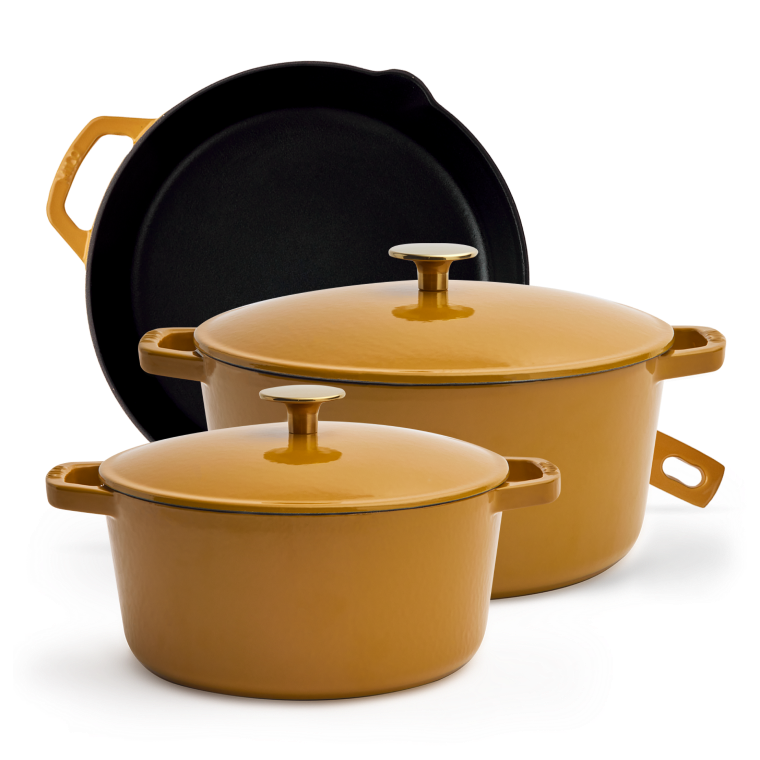
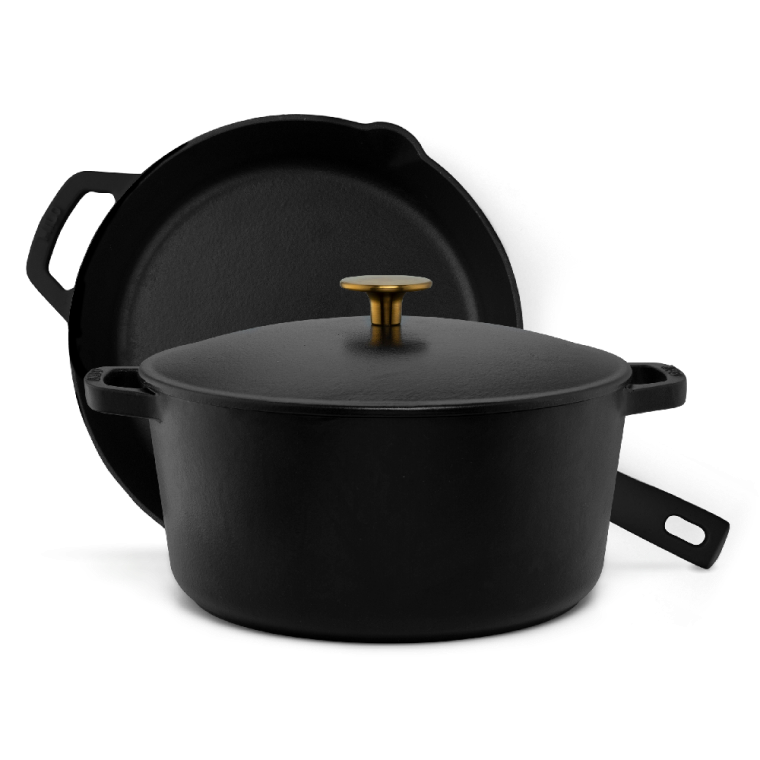

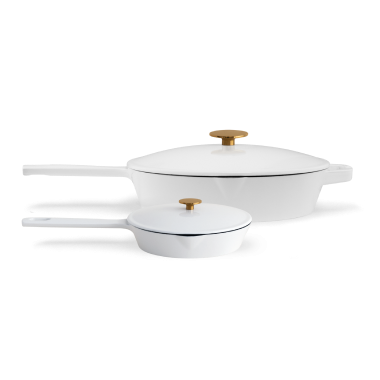


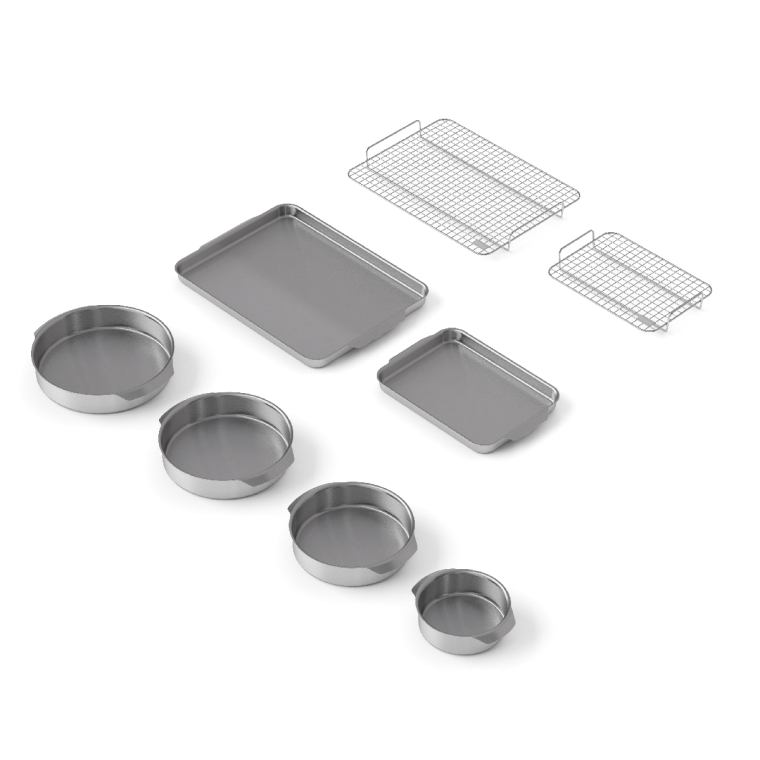
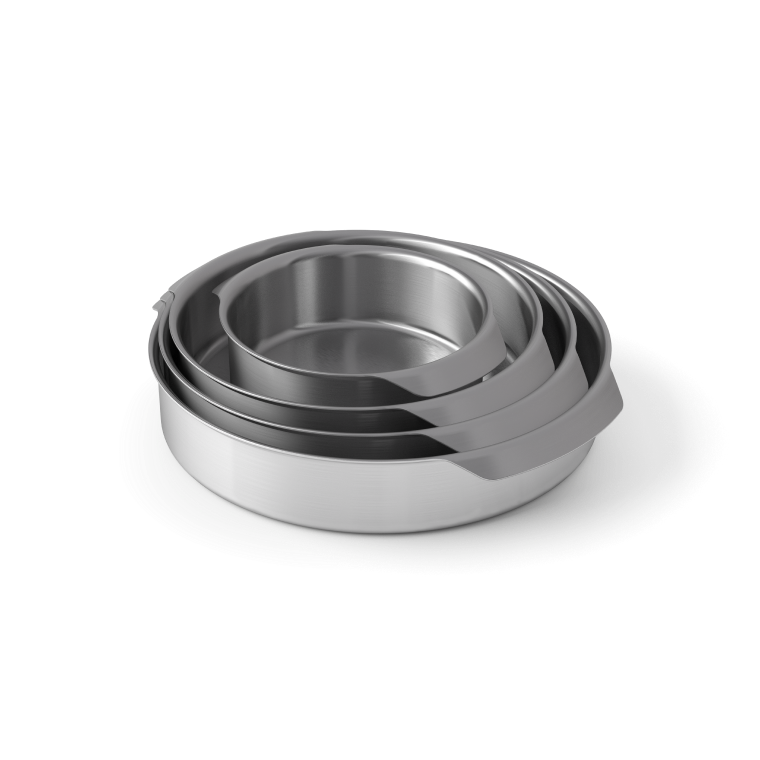


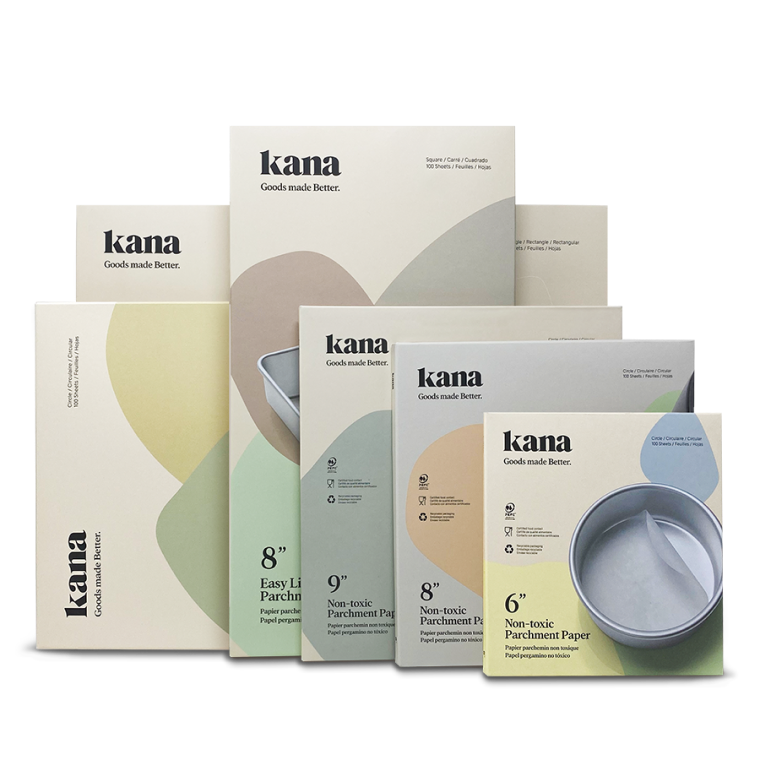






 5.5 Quart Dutch Oven
5.5 Quart Dutch Oven

